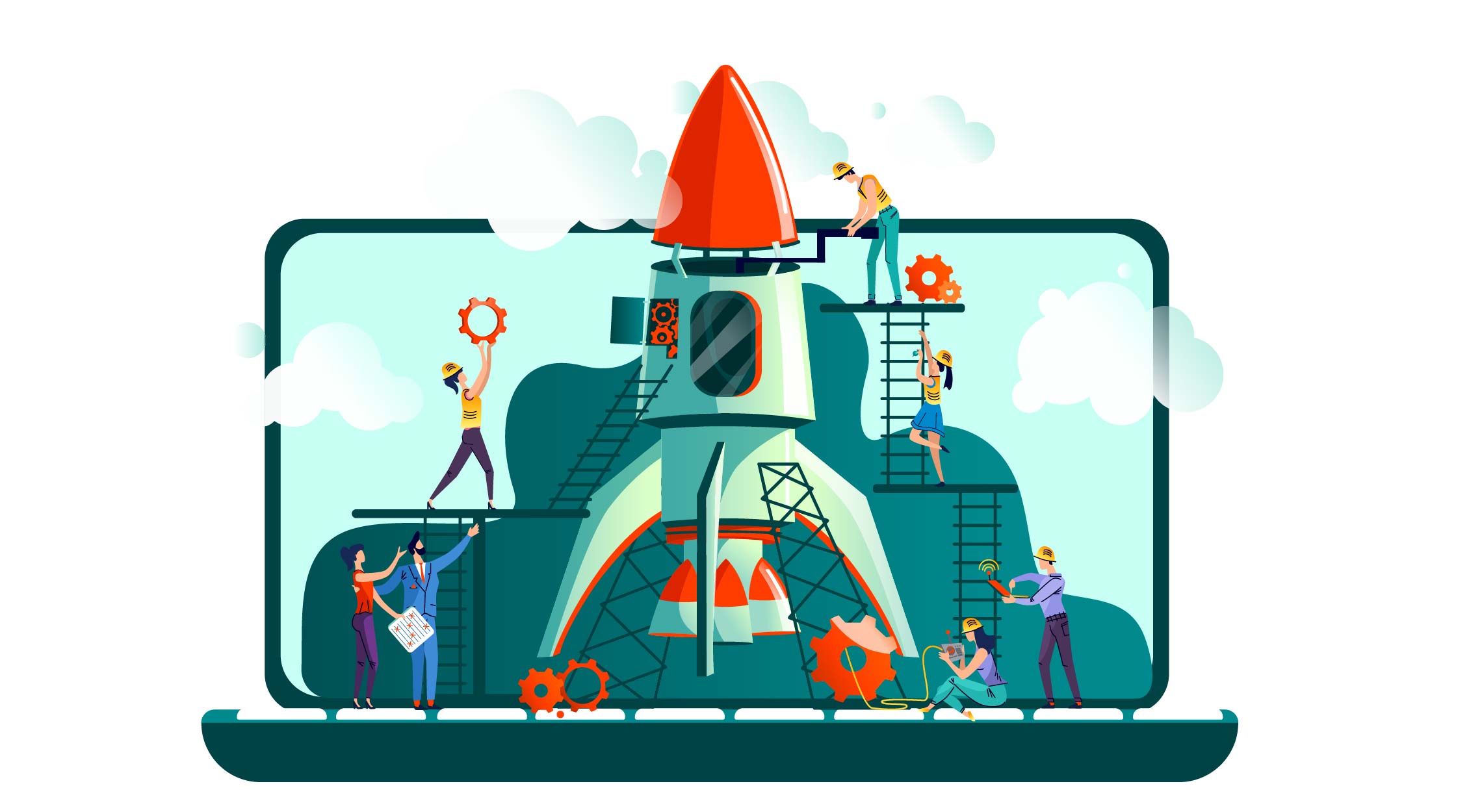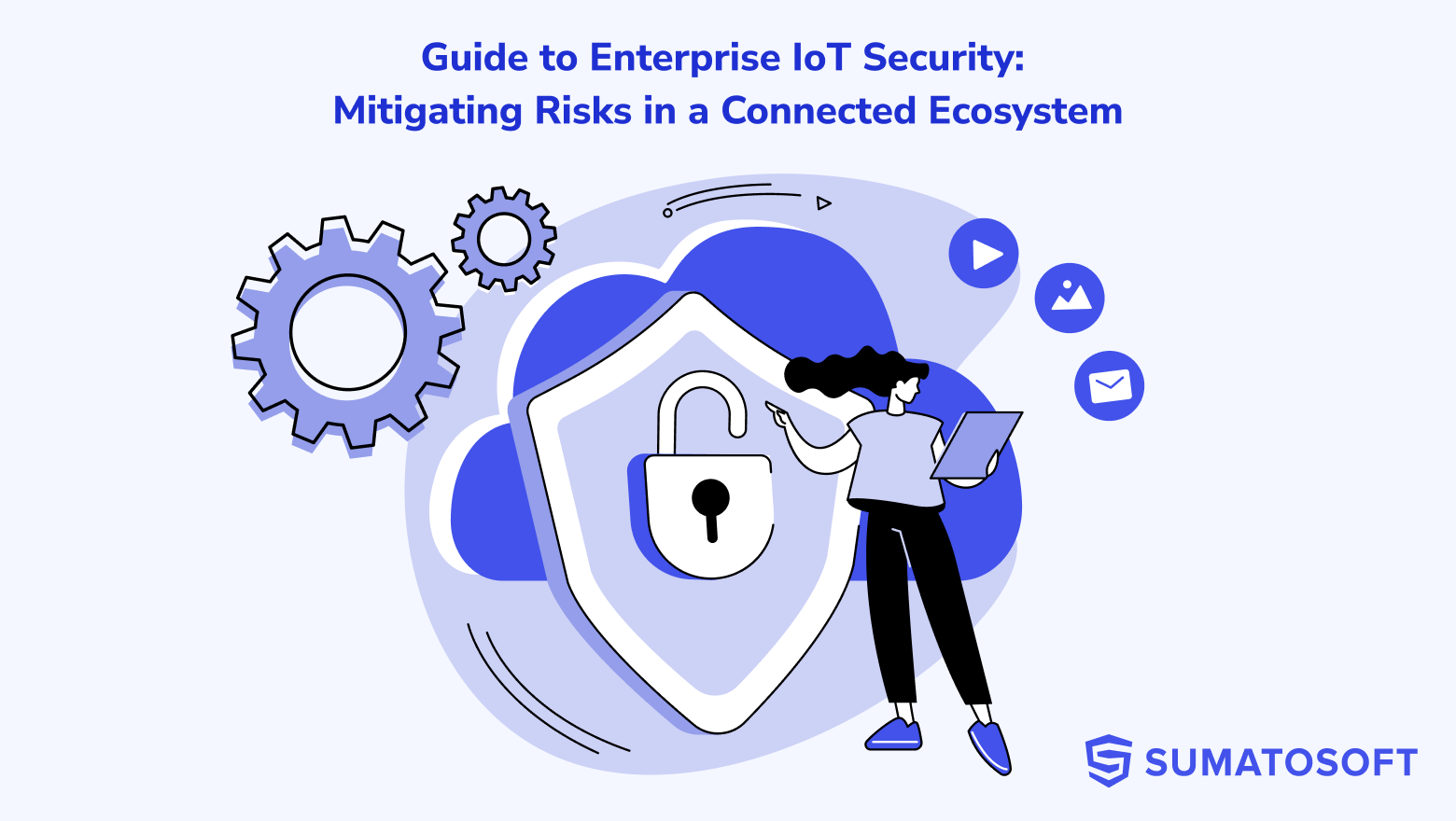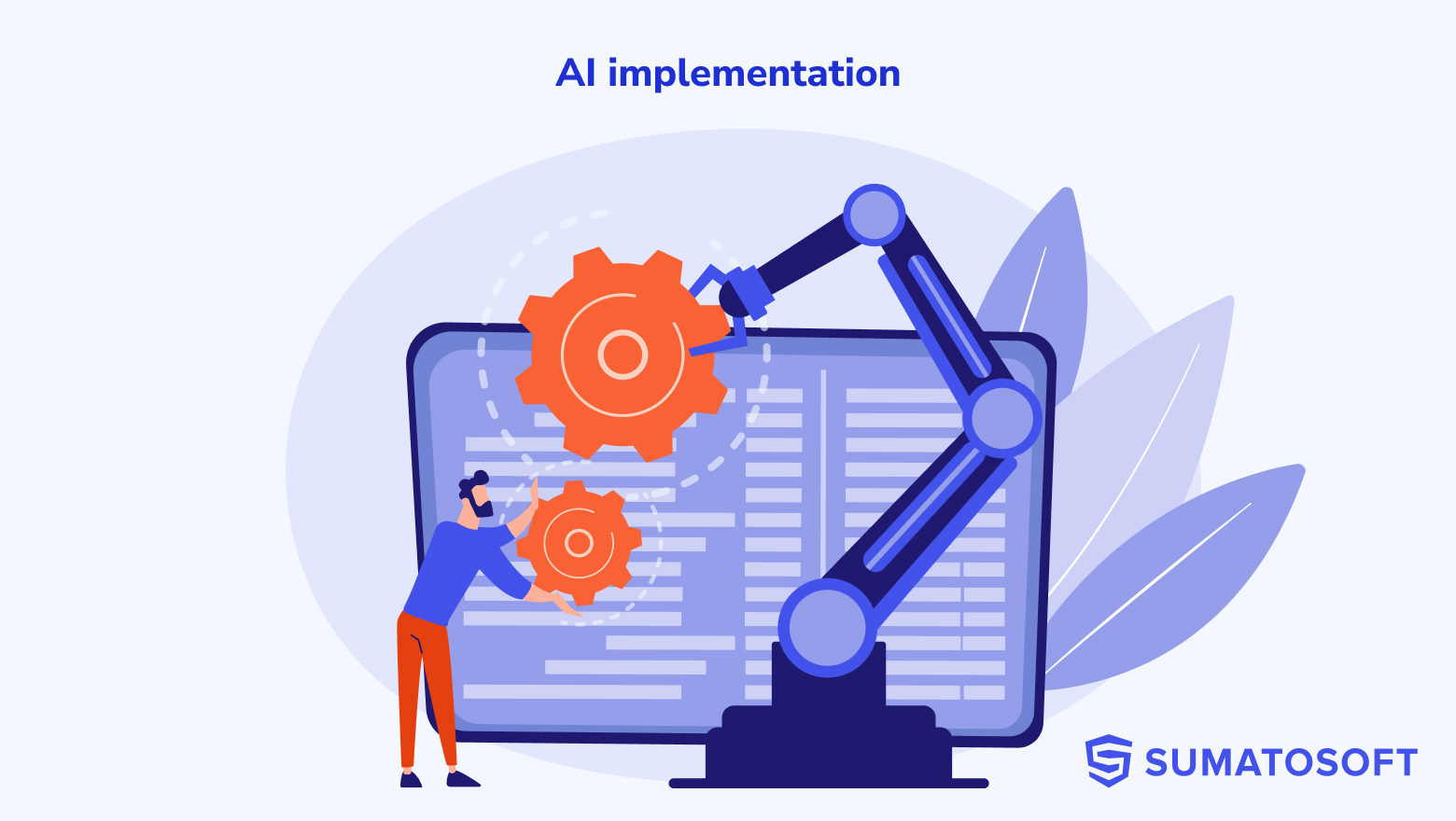Complete Guide: How to Develop a SaaS Product


Emerging with the rise of cloud technologies, software-as-a-service products have conquered their place to the top. According to the BetterCloud research that surveyed 676 IT and security professionals and organizations, companies estimate that 70% of the business apps they use today are SaaS-based. They also strongly believe that SaaS will continue to grow in importance and size.
This popularity is attributed to advantages SaaS products bring, like cost-effectiveness both for companies and private individuals, no maintenance costs, quick deployment, and more. In the article, you will find a comprehensive guide on SaaS product development, examples of pricing models, types of SaaS architecture, tools, and techniques that facilitate the development.
What is SaaS Product?
SaaS is a solution that provides users with ready-to-use software via browser or mobile app with no need to install it. Users only rent the app and pay for permission to exploit it for their purposes. Internet connection is the only requirement needed to make it all work.
Many of the tools you use every day are SaaS – Google Docs, Windows Azure (mostly used as PaaS), BigCommerce, Magento Commerce Cloud, Salesforce, Canva, and many others. Look the video to get more about SaaS.
What Are the Advantages that Define the Popularity of SaaS Products
- It’s incredibly convenient for the customers. They avoid all the problems with software installation and configuration and can just utilize the SaaS tools to solve their problems. In addition to this, Saas Products have a sustainable architecture in general that allows you to tailor your business. For example, imagine you are running an eCommerce Business on Bigcommerce and need multiple shipping options. Even if you use a ready theme for your store, you can get Bigcommerce Development services from experts and have this custom functionality in your store.
- There’s no need for customers to pay big amounts of money on expensive software. They can only buy a subscription for the period and functionality they need and cancel it when they no longer need the service. Essay service companies can benefit greatly from these tools, using Google Docs and cutting costs on paid apps.
- Support and automated updates. Apps updates and bug fixes are synchronous and available to users of all devices maintaining their security.
- Ease of management and productivity. Focusing on SaaS software providers’ benefits, the product has a positive impact on sales without even putting extra resources. Its scalability allows making a customer base of 100 and 100K without making additional efforts.
- Cloud-based apps are less susceptible to software piracy so a SaaS app has its cyber security advantage.
- SaaS apps are accessible from anywhere in the world with only one condition – the Internet – required. Some of them also may work offline and synchronize only when they are connected to the Internet.
If you belong to the customer group, today is a good time to start exploring the advantages of various SaaS products. If you are one of the entrepreneurs considering bringing your new product to the SaaS market table, we created a roadmap to keep your business afloat and avoid some of the common mistakes.
Why Create SaaS in 2025? Top Trends
The COVID-19 pandemic continues to accelerate the digital transformation of global companies.
SaaS trends affected by the 2021 COVID pandemic include increased market demand and increased opportunities for vertical SaaS solutions.
1. Rising market demand
The rapid digital transformation of businesses all over the world is accelerating the demand for SaaS product development.
SaaS is still the largest market segment. The reason for this growth is the increased demand for new software collaboration tools during COVID-19. According to the fortune business insights report, The software as a service market is expected to grow from USD 130.69 billion in 2021 to USD 716.52 billion in 2028 at a CAGR of 27.5% during forecast period.
According to data from SaaS management company Blissfully, small businesses’ spending on SaaS product development has risen sharply. The average five-year SaaS expenditure of small businesses climbed to nearly US$220,000 in 2019 (versus $55K in 2016). And Covid-19 just accelerated this trend.
With the current dearth of IT talent prompting more competitive salaries, technology service providers are increasing their prices, which is helping to increase spending growth in these segments through 2025.
2. Opportunity for vertically focused SaaS solutions
With the accelerated migration to cloud computing, companies are looking for SaaS product development that specifically targets their industry’s pain points. This provides SaaS companies with an opportunity to develop vertical SaaS solutions for specific industries, which can provide more business value and better results for a narrower target user group. These industry-specific Software as a Service solutions also provide benefits in increasing customer insight and improving data governance.
More and more SaaS companies are beginning to take advantage of this market opportunity. For example, in 2018, the software review aggregator G2 covered more than 34,000 SaaS products in 745 vertical SaaS categories.
Some other SaaS trends we described here.
3. Recurring Revenue Model as a Magnet for SaaS Entrepreneurs:
Steady Cash Flow: Launching a SaaS product means stepping into a business model where money flows in at regular intervals. Unlike traditional businesses where revenue can be unpredictable, the SaaS model, with its subscription-based approach, ensures a consistent and predictable income. This financial stability allows for better planning, risk-taking, and investment in growth.
Increased Company Valuation: In the business world, predictability is golden. Companies with steady, recurring revenues are often valued higher than those with volatile income streams. For entrepreneurs, this means that their SaaS venture, if successful, could fetch a higher price in a sale or attract more significant investment.
Building Long-term Customer Relationships: A one-time sale is a transaction; a subscription is a relationship. With a SaaS product, entrepreneurs get the unique advantage of continuous customer engagement. This ongoing relationship means more opportunities for upselling, cross-selling, and deepening brand loyalty.Economies of Scale: As the user base grows, the cost per customer often decreases. After the initial investment in developing the SaaS product, the focus shifts to maintenance and customer support. This scalability means that profits can grow exponentially as the user base expands.
SaaS Product Development Stages
1. Market Research and Target Market Defining

Market research is a must-to-have point of SaaS application development. Properly conducted, it will become the foundation of the product’s long-term success. Go and interview your potential clients about the challenges they face and how they overcome them. It will be essential for:
- finding out what exactly customers need and what you can bring to the table.
- a better understanding of your Ideal Client’s profile and tactics for their targeting built on the base of the research.
- identifying and analyzing business opportunities and selecting the most profitable ones.
- finally, find your product-market fit.
Keeping an eye on competitors will provide you with an understanding of competitor software’s strengths and weaknesses and the measures your opponents use to retain their customers.
Download our guide about the best practices applied in Business Analysis, how Discovery Phase should be done in the right way, and the benefits businesses can get from Business Analysis
Whitepaper: Discovery Phase & Business Benefits It Brings
2. Formulate a Strategy and Create an Implementation Plan
The strategy is a vision of how a product should be and how it’s going to get there. The strategy consists of three main elements.
- Vision is a fundamental reason to start SaaS product development.
- Concrete and measurable goals, the fulfillment of which will lead to the achievement of a vision.
- Actions that should be taken to achieve the goals.
When there is a strategy, it means that there is no ambiguity when it comes to making important decisions. Additionally, consider starting your customer success strategy at this stage and aligning it with your overall strategy.
3. Determine the Pricing Model

Pricing model specification isn’t always a simple matter. You need not only to solve clients’ business challenges but also be fairly awarded for the value you provide. The model choice should be made based on your idea and market research. It is very important to conduct customer research before determining a pricing model since a lot will depend on how your product solves the needs of your customers and how much and often they are willing to pay for this solution.
Therefore it is so important to calculate the unit economics in the early stages. If you charge too much, new customers may prefer the competitors’ solutions and adoption of your SaaS product may stagnate.
SaaS pricing models examples:
- Usage-based pricing
- Per Feature pricing
- Simple, flat-rate pricing
- Freemium
- Tiered Pricing
Each of them has its pros and cons and may show different effects in different conditions. We’ll make an additional review about them later.
4. Planning & Wireframing

The important component of this process is the user for whom you are creating the product.
Once the general “jobs” are defined, the next step is to define the Customer Journey Map and go into more detailed User Stories at each step. User stories should have — who the user is, what he needs, and why he needs it.
Wireframing is the creation of a schematic and structural visual representation of a product. It provides an opportunity to define the layout of UI elements on a screen before falling into detailed design.
5. Put Emphasis on MVP
The successful story of SaaS product development has to contain a minimum viable product (MVP) chapter. This is a version of a SaaS application with the basic features included to grab the attention of users and collect customers’ feedback.
Many startups and large IT companies are increasingly using MVP as a starting point for successful Saas product development. This will fast-track the market release of the product, reduce implementation costs, test the demand, and finally provide you with a clear understanding of your assumptions’ accuracy. The sooner users can tell or show you how they use the product, the higher level of success.
However, MVP is not just a version of the product with a minimum of functions, but the least resource-intensive tool for validating the economic feasibility of a business idea, which also serves as the basis for the final offer.
In summary, the main objectives derive MVP:
- To test saas application hypotheses at a minimal cost.
- Accelerated retrieval of information required for a saas product development.
- To save development time.
- Quickly deliver a product that solves at least one problem to early users.
6. App Development

After all the preparations are done, the concept is defined, the idea is validated, an analysis of the market and potential customers is made, and it’s time to make all the development work. At this stage, the main component of success is the right choice of an experienced and reliable SaaS product development team. This SaaS product development guide usually falls into 3 steps:
| Stages | Clarification |
|---|---|
The experienced team of business analysts, solution architects, and software developers gather together to shape the client’s ideas. Project Manager develops a project plan where timeframes and deliverables defined, basic essentials are highlighted and requirements are split into smaller tasks. BA’s work also shouldn’t be underestimated: he or she helps to define the technology stack and develop the terms of reference (TOR). It’s also important to build a concept in compliance with the company’s processes and long-term goals. |
|
Coding itself |
During this stage a scalable architecture is designed and prototype is developed to test and improve the concept or demonstrate the idea to the investors. UX designers focus on the behavior of a SaaS application to ensure it is actually usable and appealing. |
Support and Maintenance |
Of course, nothing stops with the release of the product. The development team always keeps an eye on the app performance, works on the new features and maintains the product. |
Download our guide about the best practices applied in the software development estimation process:
Whitepaper: Estimation of Software Development Cost — Process & Techniques
6.1. SaaS Architecture and Technologies
For the past few years, the world of SaaS software development has undergone tremendous changes, from Monolithic architecture to Microservices and Micro-frontends.
6.1.1. Monolithic
The service development of the Software as a Service architecture started with the Monolithic method, which is simple and clear, and the easiest to build.
You bring all APIs, databases, services, and UI into one executable program. This method (hereafter) is also called MVC (Model-View-Controller.
When you want to build a streamlined MVP through a quick hackathon, the MVC method will work in most cases. It is more suitable for IO-driven applications than event-driven applications.
6.1.2. Microservice
Therefore, the next stage of the evolution of the SaaS platform architecture is to use microservices architecture.
How should we divide it?
- By domain — map autonomous domains and create services for each domain.
- By scale – for SaaS application paths that may receive most of the traffic and become a high load bottleneck, we should consider separating each service/worker so that we can expand separately and choose the right “tool” (framework, language, etc.).
- By use case – if you have a specific use case that requires special technology, it is recommended to split it into different services.
6.1.3. Micro front end
The idea of developing a micro front end is to build a web application as a set of independent functions and components built by independent teams. When all components and functions are hosted on a UI Shell, the end-user experience will be seamless.
6.1.4. Technological Stack
Choosing a SaaS application technology stack is like choosing the building materials required for a physical structure. A technology stack is a tool used to create a web application and run it.
Obviously, cloud SaaS needs a powerful and simple programming language to meet today’s development needs.
• Frontend: HTML, CSS, JavaScript (Angular, React, Vue.js), etc
• Backend: JavaScript (Node.js), Ruby (Ruby on Rails), Node.js. etc
• Databases: MySQL, PostgreSQL.
• Other tools: Nginx, Apache.
6.2. How much does it cost to develop a SaaS product?
This basic saas product development guide won’t be full without mentioning the cost of its development. The cost of SaaS application development will depend on the complexity of the product, its accompanying functions, and its integration potential with various other services.
Usually, the budget consists of several parts: business analysis, design, programming, server, software monitoring and maintenance, customer support, and promotion.
Based on these parameters and the hourly rates of European developers, we can name the following ranges:
- Basic SaaS MVP (real MVP!) may cost you a total of $25,000-50,000.
- Feature-rich web SaaS applications can be as high as $100,000.
It sounds so high, that it’s still cheaper than if the app were developed by a North American-based SaaS development company. And that’s why we recommend starting with an MVP development.
6.3. Сommonly made mistakes (better nor be repeated)
Choosing the wrong software provider
Very often the software development team choice turns out to be crucial for all the SaaS projects, their prospects, and profit. It’s needless to mention the reputation break and customer loss. That is the reason why it’s important to do good research before relying on one or another software vendor. SumatoSoft team is an example of a reliable software partner with solid expertise in digital product creation and vast experience in SaaS product development in particular. Always check the provider’s portfolio and testimonials not only on their website but also on other platforms. Trusted companies will have the highest rates (for comparison, the rate of Sumatosoft is 4.8/5 at (clutch.co) and 5/5 at (goodfirms.co)).
Failing to pivot
The digital world in general and the SaaS market, in particular, are undergoing continuous reorganization and development, so it’s important to keep up with its pace so as not to be left overboard. Flexibility is the key. Thus it’s needless to change and be stuck at the first business model you came up with: leaders often have to pivot to survive.
Read our previous article about the importance of Business Analysis:
Why Business Analysis Is a Treasure Trove in Software Development Projects
7. Rolling out Your Product

The crucial question remains the choice of a reliable cloud provider. We advise you to pay attention to Microsoft Azure and Amazon AWS, which make it easy to deploy your SaaS solution. These services can be easily scaled according to the requirements of a project and are equipped to deal with surges in users of your SaaS platform.
For example, Amazon AWS provides a wide range of infrastructure services, such as providing computing power, various storage options, network solutions, and databases offered as services: as needed, with availability within a few seconds, and with payment upon use. At your disposal – more than 90 AWS services: from data storage to tools deployment and directories for content delivery. New services can be prepared fast and without initial capital costs. This enables start-ups, and small and medium-sized enterprises to access necessary components to quickly respond to changing business requirements.
SumatoSoft is a certified Amazon AWS partner. We provide services for the full range of Amazon AWS services and provide technical and consulting support.
8. Beta Testing
It’s impossible to foresee all the customer requirements and preferences. All of this may be sorted out by beta testing. Beta testing is an excellent tool to improve the quality of your SaaS solution and may be the cheapest one among quality assurance and testing services. It may be done by a small group of users for free or at a minimum price in return for their time and feedback provided. When the results are acceptable, new customers at a pre-planned price may be invited.
9. Customer Onboarding and Support
This is a crucial moment in the life cycle of SaaS applications development because the users’ initial impression will play a significant role in their further choice: either stay loyal to the product or switch to another one.
Customer onboarding should provide initial training along with ongoing support. Its duration is defined by users’ needs in assistance with exploring all the features that they plan to use.
10. Marketing Your SaaS Product

Nothing stops after the SaaS project is officially launched. It’s important not to leave marketing out of proper attention because a wise and well-elaborated strategy can make a difference. One of the most effective ways to promote your product is to benefit from specialized marketing software. Let’s pay special attention to the marketing tools:
Effective tools in SaaS project promotion:
- Content Marketing
- Product Trials
- Search Engine Optimization (SEO)
- Referral Marketing
- Google AdWords
- Co-marketing
- Retargeting
Content marketing is used all over the world to build the brand, attract visitors and turn them into customers. The main advantage of this method is that content continues to provide leads without any additional investments, while other forms of marketing, such as pay-per-click (PPC) advertising, will not do so after you stopped paying. Don’t forget about Search Engine Optimization as it makes your content discoverable.
Talking about PPC advertising, it also remains popular because of such reasons as scalable and targeted traffic delivered to your website. Due to its predictability, the marketing budget will always be kept under your control. Retargeting, used along with PPC, will help you to turn hard-earned visitors into customers.
Nothing is better than the opportunity to try the product before purchasing – that’s why Product Trials must be considered as a good opportunity to get your potential customers to estimate the product’s value. But providing access isn’t enough. You have to be sure that users are satisfied with the service so onboarding and support from your side must also be provided.
In the SaaS case, co-marketing may be highly effective. Usually, companies that are going to collaborate have either products that are complementary to each other or shared views and approaches. Joined efforts may bring a very high outcome.
Bottom Line
The fact is that the SaaS market now is continuing to expand. More and more people get acquainted with all the opportunities SaaS product development brings to their lives. Small and medium businesses are starting to realize that Software as a Service is a great fit for their needs. That’s why joining the SaaS market today may bring great prospects and huge benefits tomorrow. Of course, that’s not always easy and it’s important to have a deep understanding of how this domain works. We at SumatoSoft are always ready to share our knowledge and experience and guide you through this journey. Our services cover all stages of custom software development for startup companies with small projects as well as for giant enterprises that need full-cycle corporate software development. We believe that technologies can positively affect businesses and improve the standards of living and quality of life. SaaS is one of such great technologies. Get in touch with our team and get a free consultation about your SaaS product development.
Let’s start
If you have any questions, email us info@sumatosoft.com




